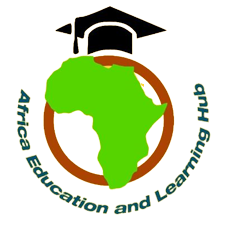| dc.description.abstract | The initiatives for improvement of education in Tanzania started just after independence in 1961. Since then, a number of interventions have been in place to improve the same sector. Of recent, such interventions to the sector have been channeled through Education Sector Development Plans (ESDPs) with the most current one coming to an end in the Financial Year 2020/21. In such initiatives, budget allocation and disbursement to the sector remain the key policy tool in implementation of the laid out plans, policies and objectives. Therefore, TEN/MET has found it necessary to conduct a five years’ budget analysis in the Education Sector. The aim of this study was to analyze education budget trends for the period of five financial years 2016/17 to 2020/21. Data for this study was obtained through primary and secondary sources. The study employed a mixed methods research design whereby both qualitative and quantitative methods were adopted in the analysis and presentation of findings. The findings revealed that education sector has been ranked the second priority sector after infrastructure and transport sector in budget allocation during the reviewed period. Although there was an increase of 4.6 percent in budget allocation from 2019/20 to 2020/21 the trend to the rest of the period indicated a decrease in budget allocated to the sector by 5.4 percent from 2016/17 to 2019/20. The overall trend shows a one percent decrease in allocated budget during the entire period under review. Gross Domestic Product (GDP) percentage allocation to the sector was 3.6 percent while percentage allocation of national budget to the sector was 14 percent, this implies unattained international standard agreement of 6 percent and 20 percent respectively. The study unveiled that despite an increase in disbursement of development budget on average, just a small proportion of 24 percent of the total budget was allocated to development projects contrary to national standard which calls for a minimum allocation of 40 percent. Similarly, despite the fact that the government implements capitation grant scheme on annual incremental based allocation in order to improve education quality, on average during the period under review, per capita allocation trend failed to meet policy requirements especially to primary education. On improvement of academic quality through inspectorate activities, the allocation trend
vi
revealed a substantial increase of 28 percent of budget allocated during the period under review. Similarly, there was a significant increase in the trend of budget allocated to inclusive education by 77 percent especially to people with special needs. The findings further revealed that although loanable funding to higher education students increased by 7.4 percent, more allocation is recommended because the allocated amount could not complement the increase in higher education enrolment which prevents many eligible students from getting access to higher education. The inception of fee free education scheme started by adequate allocation followed by a sharp decline in the next year by 93 percent, then it continued decreasing thereafter by 52 percent to 2020/21 with an overall decrease of 90 percent during the entire period under review. Although the scheme provides equitable access to basic education, based on this allocation trend the quality of education remains questionable.
It is recommended that the government should adhere to its commitment to international benchmark of 20 percent allocation of the national budget to education sector and 6 percent of GDP to the education sector. In the same vein the government should comply with a national requirement of 40 percent allocation of the sector’s budget to development projects. This may be achieved through transparency and effective engagement of private sector through PPP, society and CSOs in the budget process. Improvement of recovery system on higher education student’s loans to revamp revenue collection to higher leaning loanable funds, diversify sources of revenue including foreign sources and request for public debt relief; all these are deemed necessary in order to achieve the international standard and national allocation benchmarks. | en_US |

